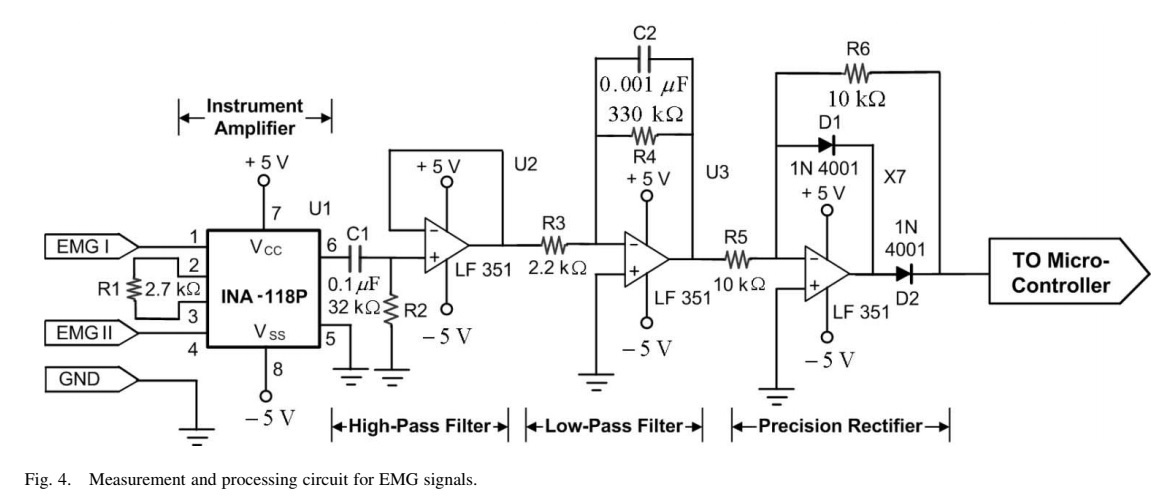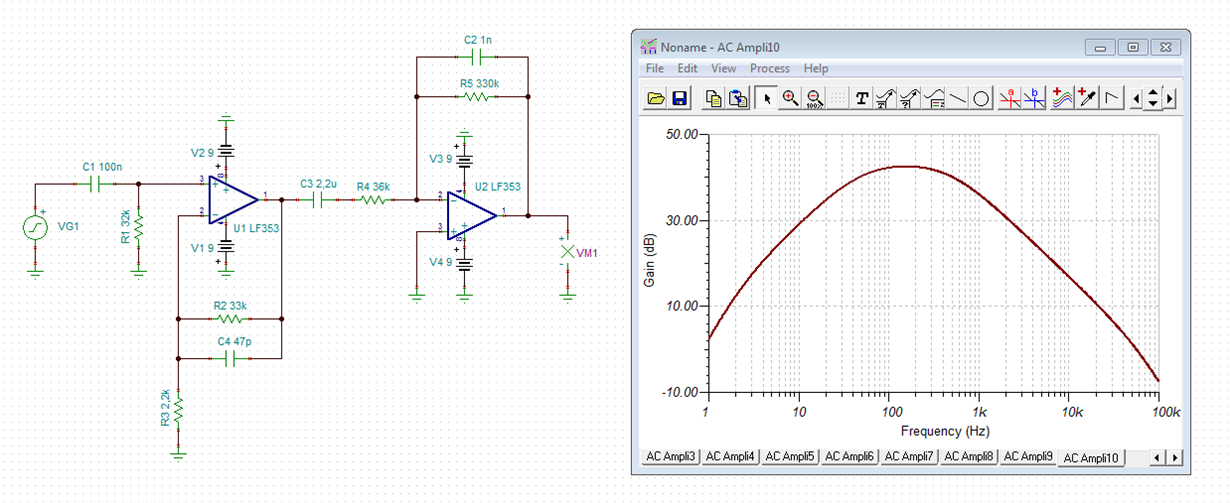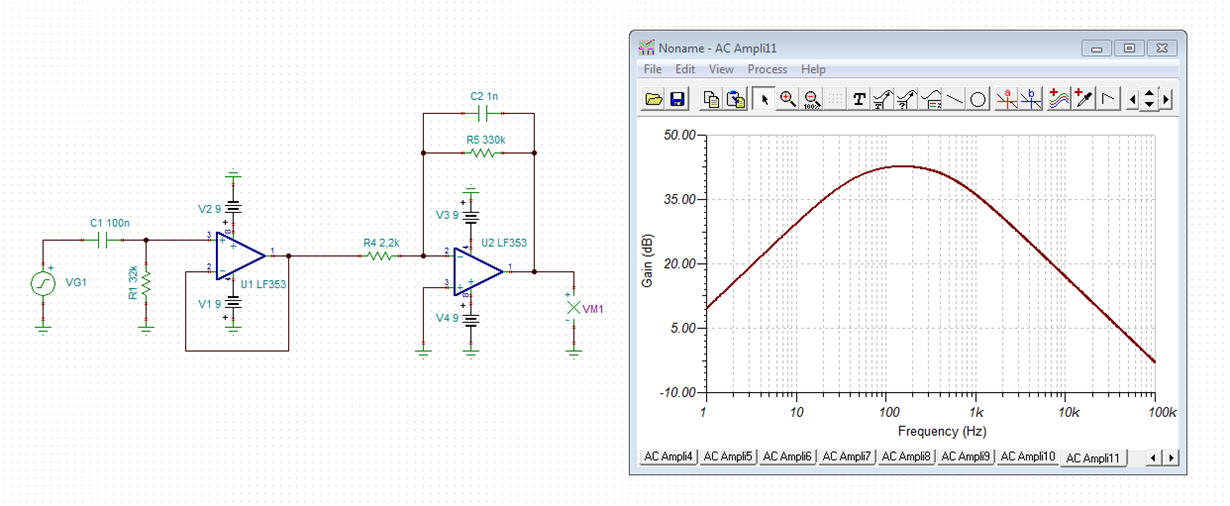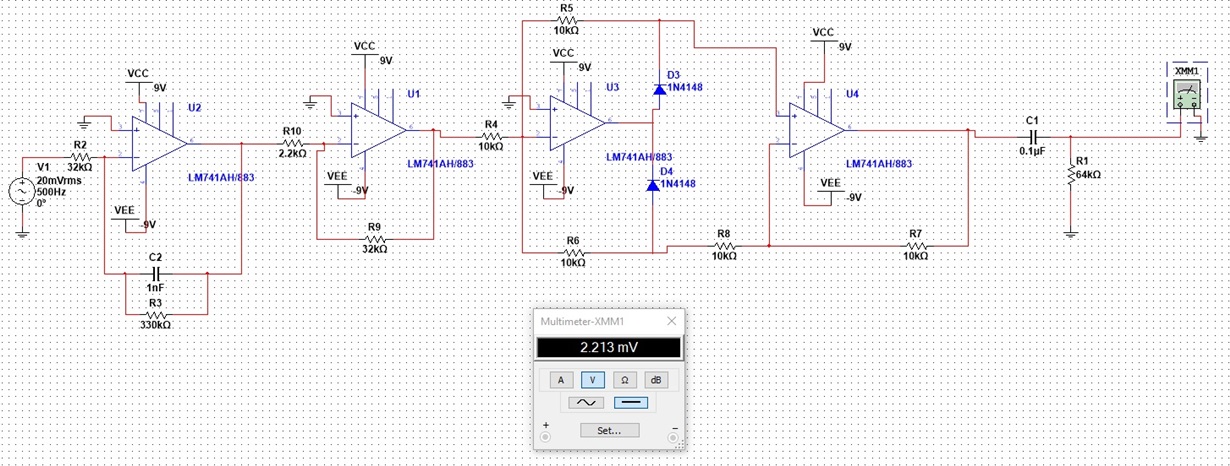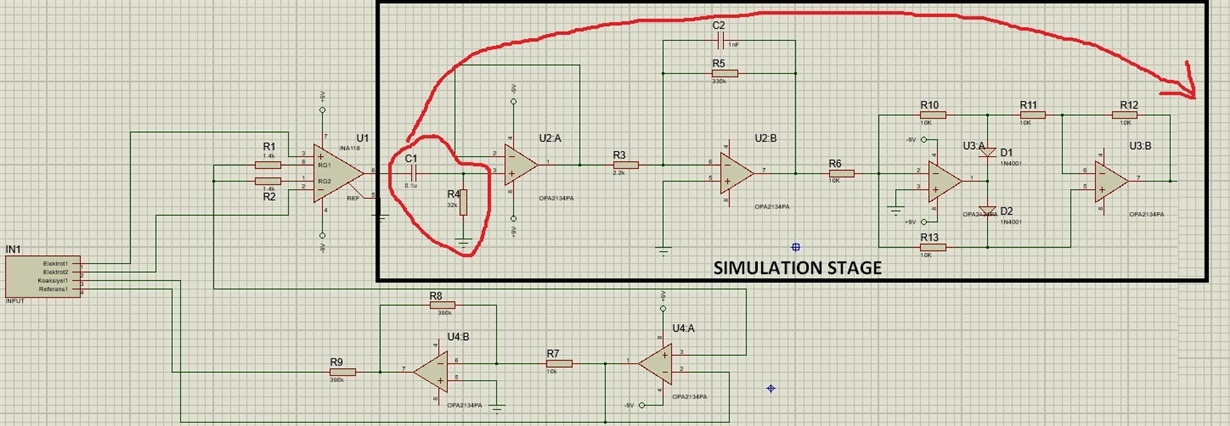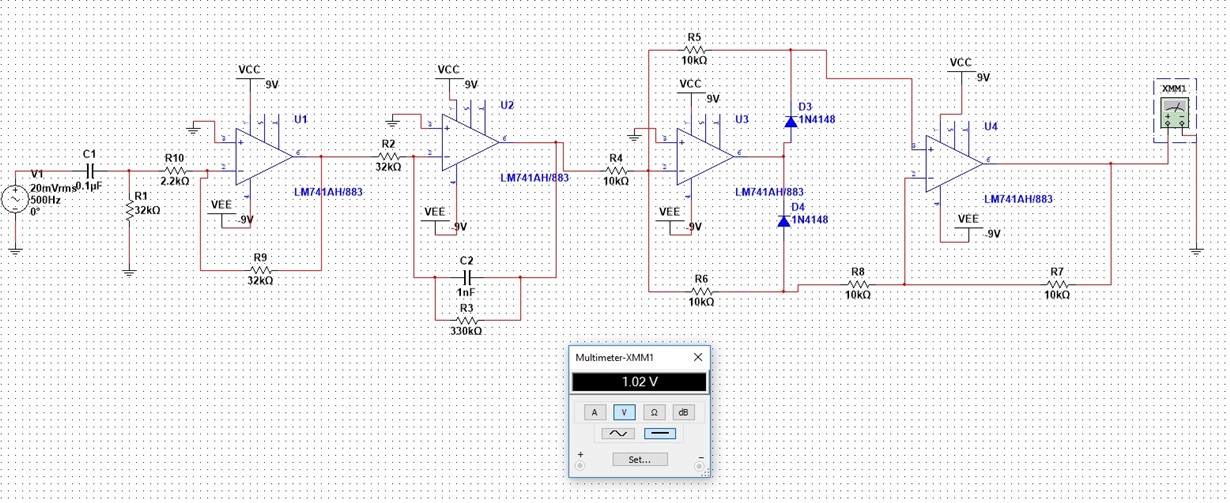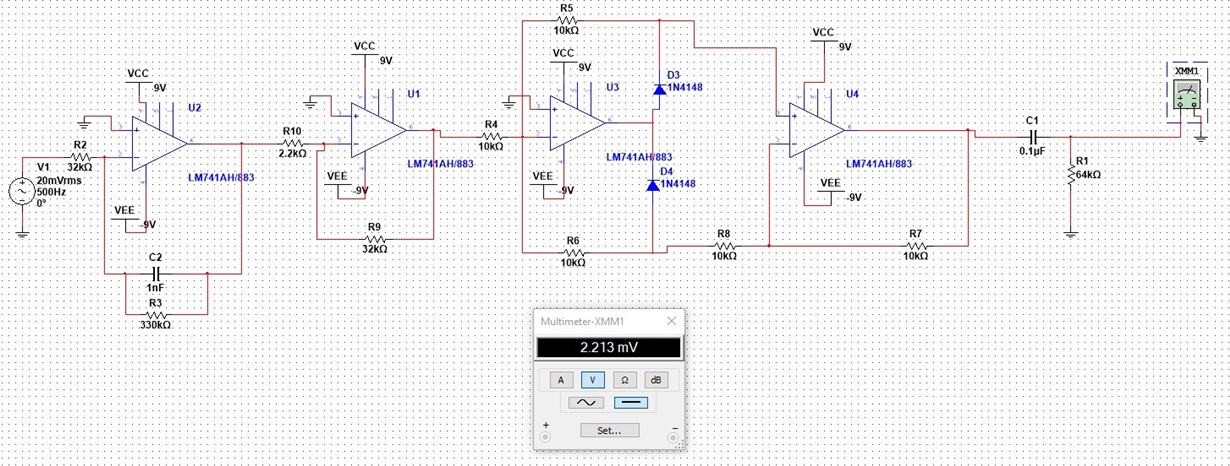Other Parts Discussed in Thread: OPA2134, , INA128, TL072, TINA-TI
Hello.
I use a EMG amplifier circuit. In the circuit i use INA128 as In-Amp and TL072 as Op-Amp. I had almost 500 mV dc offset output of the circuit. The EMG signals that taken from the surface from the body maximum amplitude is 1mV and my circuit total gain is 3000. I wanted to upgrade these IC and i decided to use INA129 and OPA2134. But the dc offset is not better. Sometimes it was worse. What is the problem? My circuit is attached!



